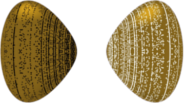

|
||||||||

|
||||||||

|
||||||||

|
||||||||

|
||||||||

|
||||||||

|
||||||||

|
||||||||

|
||||||||

|
||||||||

|
||||||||
Poincaré instituteReinventing rational points |
|
||||||||
Lectures
Probabilistic Diophantine geometryEfthymios SofosLet \(F\) be a smooth homogeneous polynomial with integer coefficients. In the first part we will see that the prime factorisation of the coordinates of the integer points on \(F=0\) can recognise a part of the geometry of \(F=0\). Namely, we shall model the factorisation by a multivariate Gaussian distribution and we will see that the covariance matrix of the Gaussian distribution (which is a statistical invariant) keeps track of certain geometric data related to the dimensions of hyperplane sections of \(F\). In the second part we will study the real numbers given by \((\log\log p_i)/(\log \log H)\), where \(p_1\lt p_2\lt \dots\lt p_k\) are the primes for which \(F=0\) has no \(p\)-adic zeros and \(H\) is the size of the coefficients of \(F\). We will see that these numbers are modelled by \(k\) uniformly distributed random points in the interval \([0,1]\), as long as \(F\) ranges in an infinite family. This leads to several connections between local solubility for varieties and normal distribution, Brownian motion and Poisson point process. |
|||||||||



